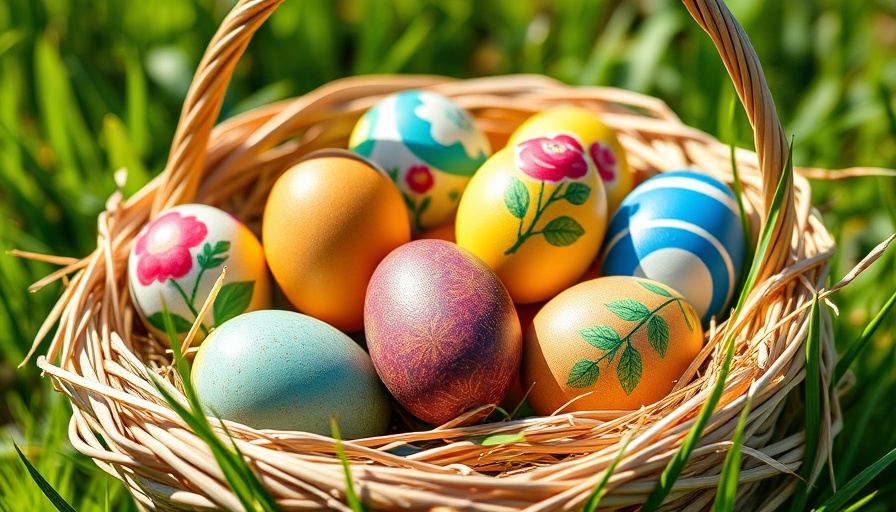
Why Ditching Plastic Easter Grass Matters
This Easter, consider the environmental footprint of the decorations we often take for granted. Traditional plastic Easter grass is not just an aesthetic choice; it results in long-lasting pollution that doesn't biodegrade. By opting for eco-friendly alternatives, we can reduce our waste, protect our planet, and encourage others to follow suit. The shift away from plastic not only helps our immediate surroundings but contributes to broader sustainability efforts.
Diverse and Colorful Alternatives
There are countless sustainable alternatives that can brighten up any Easter basket. From biodegradable paper grass made from recycled materials to shaved wood fibers, these options are often just as colorful and festive. Here are some delightful ideas:
- Shredded Paper Goods: Utilize old magazines and junk mail by shredding them for a vibrant touch.
- Wool Fibers: Organic wool can be dyed in an array of colors, providing a fun, reusable option.
- Leafy Greens: Freshly cut kale or arugula can serve as delicious, edible decorations.
Innovative Recycling Solutions
Every time you choose an alternative to plastic, you’re making a difference. Transforming waste materials into your Easter basket filler means engaging in an eco-friendly recycling approach. Use shredded bills and leftover crafting paper you have at home for your baskets—this not only cushions your items but also engages the family in a sustainable project. To make it even more special, create DIY decorations that can be reused next year.
Growing Your Own Easter Grass
Incorporate gardening into your Easter traditions by growing your own Easter grass! Whether it's wheatgrass or another type of grass, this activity can be a fun and educational family project. With just a little planning and nurturing, you can have a beautiful, edible grass as the perfect bedding for your Easter treasures.
Repurposing Past Decorations
For those who can’t quite let go of the plastic tradition, consider repurposing last year’s grass. Store it in a container after the celebrations, and reuse it next year. However, as a community, let’s prioritize awareness of our choices. The more we share knowledge about sustainable practices, the more we can influence our friends and family.
Final Thoughts and Call to Action
It’s time for a shift in the narrative around Easter and its celebrations. Choose not just for today but for future generations: swap out plastic for a sustainable, biodegradable approach to Easter. Be a part of the solution—start by planning your plastic-free Easter basket!
 Add Row
Add Row  Add
Add 




 Add Row
Add Row  Add
Add 

Write A Comment